
Richard Morris Hunt was an American architect of the nineteenth century and an eminent figure in the history of architecture of the United States. He helped shape New York City with his designs for the 1902 entrance façade and Great Hall of the Metropolitan Museum of Art, the pedestal of the Statue of Liberty, and many Fifth Avenue mansions since destroyed.

Peabody & Stearns was a premier architectural firm in the Eastern United States in the late 19th century and early 20th century. Based in Boston, Massachusetts, the firm consisted of Robert Swain Peabody (1845–1917) and John Goddard Stearns Jr. (1843–1917). The firm worked on in a variety of designs but is closely associated with shingle style.

John Quincy Adams Ward was an American sculptor, whose most familiar work is his larger than life-size standing statue of George Washington on the steps of Federal Hall National Memorial in New York City.

Huntington Avenue is a thoroughfare in the city of Boston, Massachusetts, beginning at Copley Square and continuing west through the Back Bay, Fenway, Longwood, and Mission Hill neighborhoods. It is signed as Massachusetts Route 9. A section of Huntington Avenue has been officially designated the Avenue of the Arts by the city of Boston.
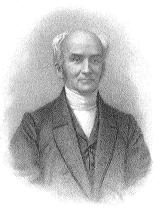
Timothy Gilbert was an American piano manufacturer, abolitionist and religious organizer in Boston, Massachusetts. His brother Lemuel Gilbert was also a piano manufacturer.

Henry Van Brunt FAIA was an American architect and architectural writer.

The Massachusetts Charitable Mechanic Association (est.1795) of Boston, Massachusetts, was "formed for the sole purposes of promoting the mechanic arts and extending the practice of benevolence." Founders included Paul Revere, Jonathan Hunnewell, and Benjamin Russell. Through much of the 19th century, the association organized conferences and exhibitions devoted to innovation in the mechanical arts.

Abram French (1815–1884) was a crockery, glassware, and china dealer in 19th-century Boston, Massachusetts.
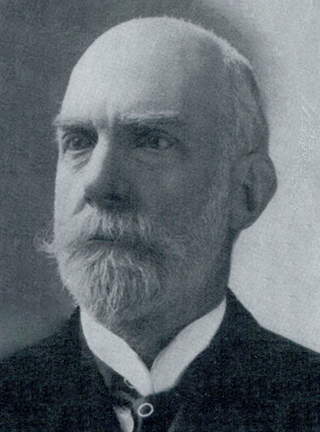
William Gibbons Preston was an American architect who practiced during the last third of the nineteenth century and in the first decade of the twentieth. Educated at Harvard University and the École des Beaux-Arts in Paris, he was active in Boston, New York, Rhode Island, Ohio, New Brunswick and Savannah, Georgia, where he was brought by George Johnson Baldwin to design the Chatham County courthouse. Preston stayed in Savannah for several years during which time designed the original Desoto Hotel, the Savannah Volunteer Guards Armory and 20 other distinguished public buildings and private homes. He began his professional career working for his father, the builder and architect Jonathan Preston (1801–1888), upon his return to the United States from the École in 1861, and was the sole practitioner in the office from the time his father retired c. 1875 until he took John Kahlmeyer as a partner in about 1885.
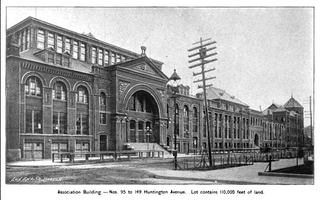
Mechanics Hall was a building and community institution on Huntington Avenue at West Newton Street, from 1881 to 1959. Commissioned by the Massachusetts Charitable Mechanic Association, it was built by the noted architect William Gibbons Preston. The building was located between the Boston and Albany railroad yards and Huntington avenue. It was razed for the Prudential Center urban renewal project of the early 1960s. The site is on the north side of Huntington Avenue, and since 1941 has been served by Prudential Station of the MBTA Green Line E branch.

George Albert Clough was an architect working in Boston in the late 19th-century. He designed the Suffolk County Courthouse in Pemberton Square, and numerous other buildings in the city and around New England. Clough served as the first City Architect of Boston from 1876 to 1883.
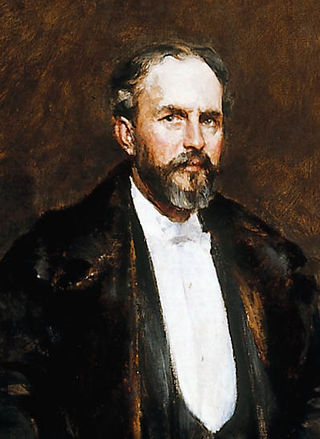
Ernest Wadsworth Longfellow (1845–1921) was an American artist in Boston, Massachusetts, and New York. He was the son of Henry Wadsworth Longfellow.

Frank Hill Smith (1842–1904) was an American artist and interior designer based in Boston, Massachusetts. He painted landscapes and figures; and designed wall frescos, stage curtains, stained-glass windows, and other décor. Among his works are ceiling frescoes in the Representatives Hall in the Massachusetts State House.
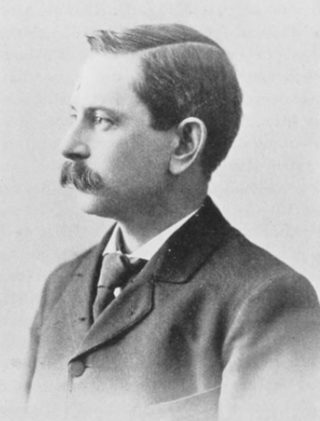
Walter Lofthouse Dean was an American marine painter, commodore of the Boston Yacht Club and Vice President of the Boston Art Club. Dean was one of the most prominent members in Boston, Massachusetts of the Paint and Clay Club, the Art Club, the Society of Water Color Painters, the South Boston Art Club and was also a member of the Salmagundi Club of New York and on the Massachusetts jury of paintings for the 1900 Paris Exposition.

The Maine Charitable Mechanic Association is a private non-profit organization located in Portland, Maine, United States. Founded in 1815, it has since 1859 been headquartered at Mechanics' Hall, 519 Congress Street, in the center of Portland. The library's hours are Tuesday through Thursday from 10:00 a.m. to 3:00 p.m., Friday from 4:00 p.m. to 7:00 p.m., and Saturday from 10:00 a.m. to 1:00 p.m.

William Merchant Richardson French (1843–1914) was an American engineer. French first came to Chicago in 1867 to pursue a career in civil engineering and landscaping. While working in Chicago, he garnered a national reputation for his lectures and articles on art subjects. In 1878, he became Secretary of The Chicago Academy of Design, which was later reorganized as the Chicago Academy of Fine Arts (1879). The Chicago Academy of Fine Arts changed its name to The Art Institute of Chicago in 1882. French became the secretary of this new corporation and its first director in 1885, holding this position until his death in 1914.

Marion A. McBride, also spelled MacBride, was an American journalist and clubwoman. She founded several women's press associations, most notably the New England Woman's Press Association. She wrote and lectured on domestic science, and was active in charitable causes and local politics. It was largely due to McBride's activism that the state of Massachusetts began hiring matrons for city police stations and built a separate facility for female inmates in Boston.

Henry Seymour Chase Jr., better known by his professional name Harry Chase, was an American artist who specialized in marine paintings.
Gamaliel Waldo Beaman was an American landscape painter active in New England, and is best known for his views of New Hampshire's White Mountains as well as his many paintings of Connecticut Valley and of Mt. Wachusett and Mt. Monadnock in north central Massachusetts and southern New Hampshire.




















